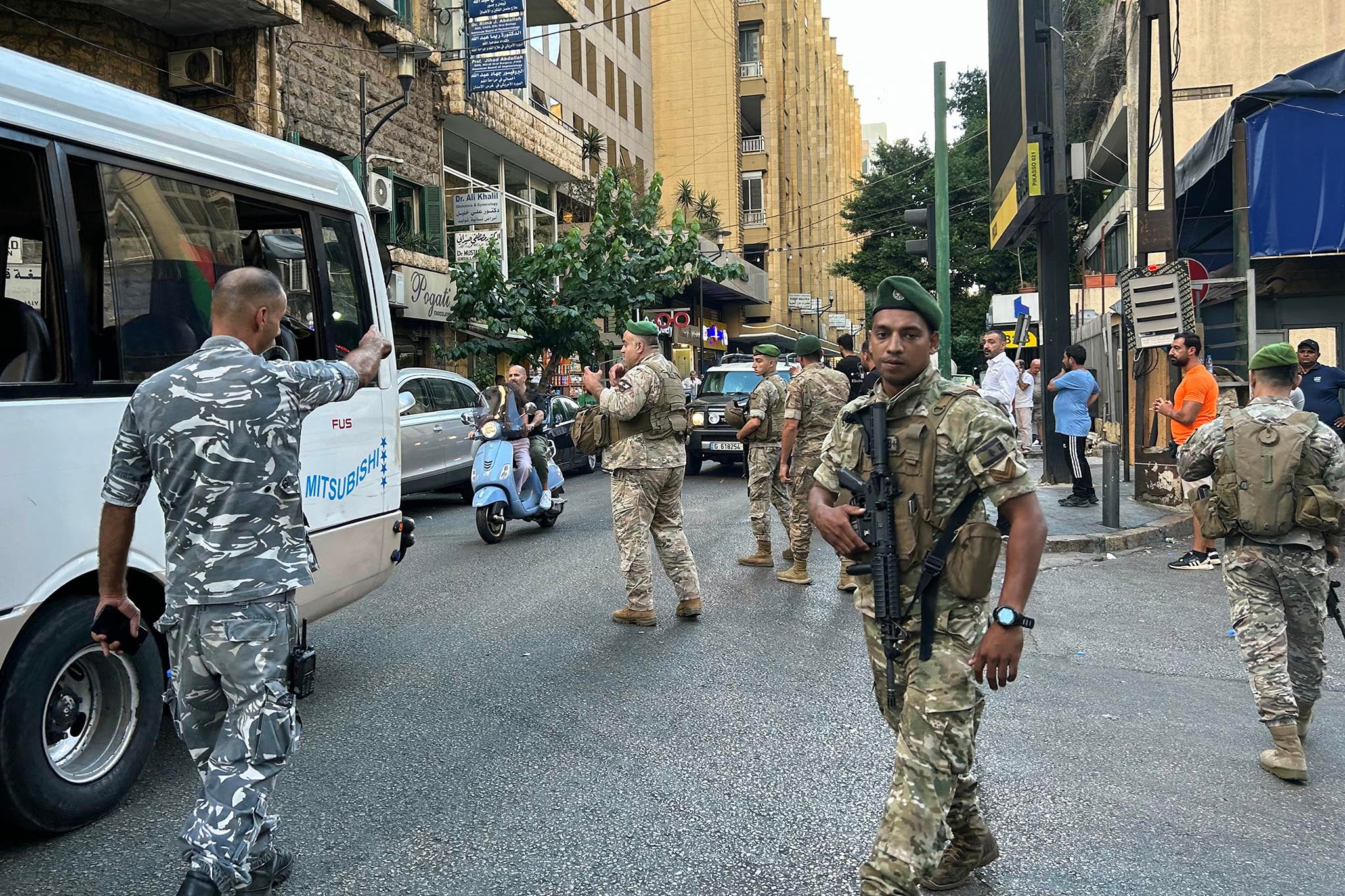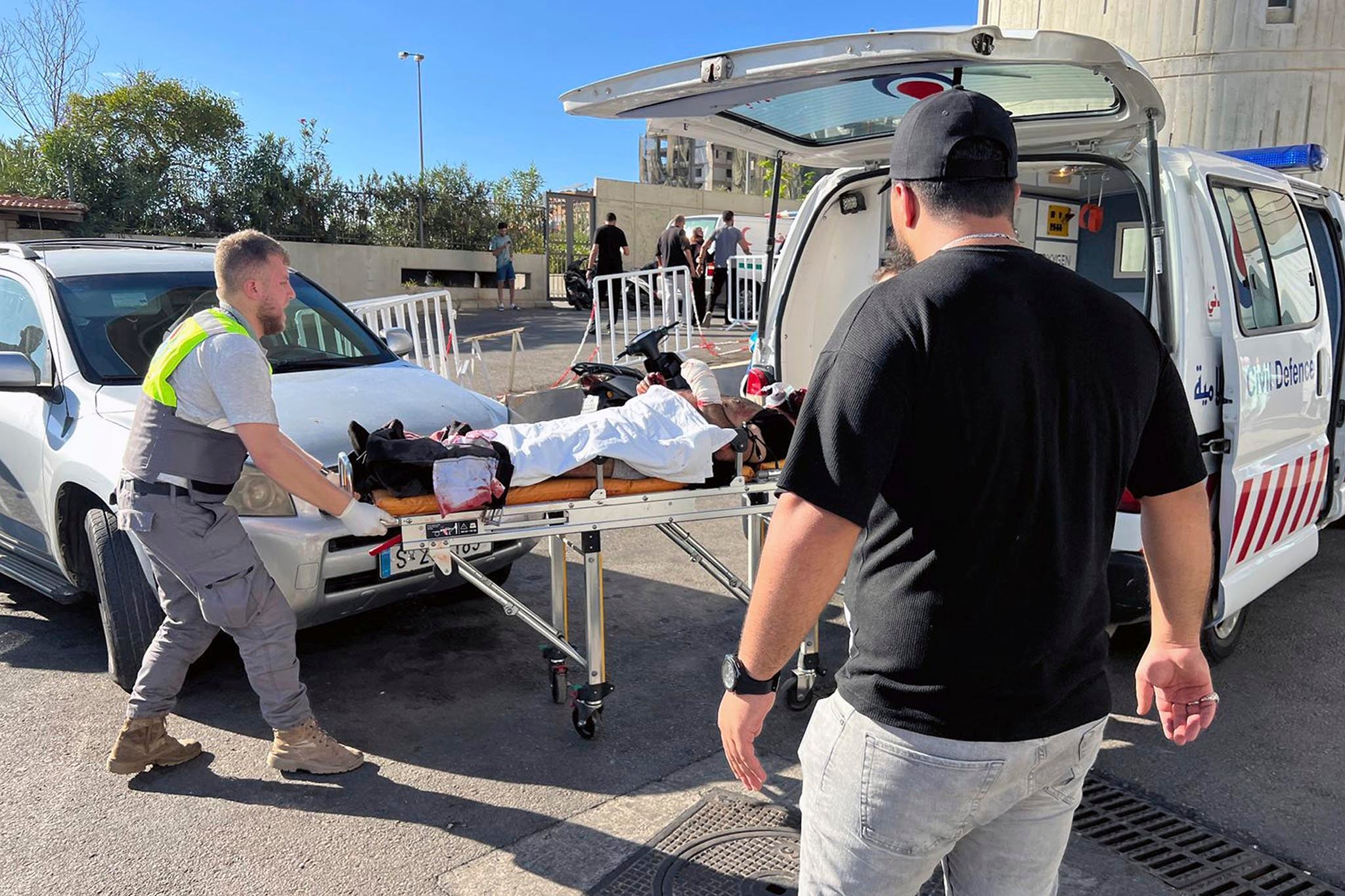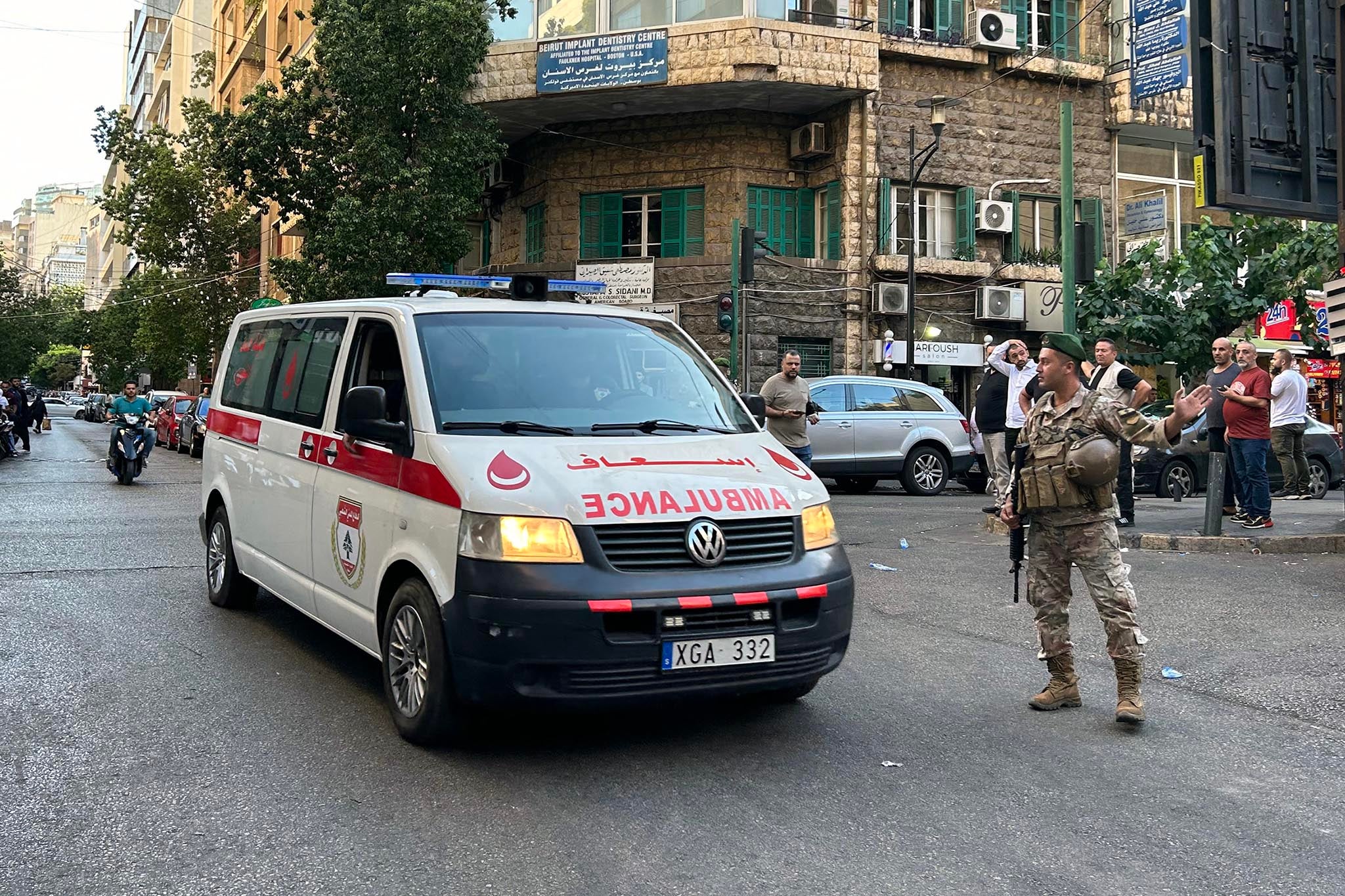This website uses cookies so that we can provide you with the best user experience possible. Cookie information is stored in your browser and performs functions such as recognising you when you return to our website and helping our team to understand which sections of the website you find most interesting and useful.
Your support helps us to tell the story
As your White House correspondent, I ask the tough questions and seek the answers that matter.
Your support enables me to be in the room, pressing for transparency and accountability. Without your contributions, we wouldn't have the resources to challenge those in power.
Your donation makes it possible for us to keep doing this important work, keeping you informed every step of the way to the November election

Andrew Feinberg
White House Correspondent
At least eight people have been killed, including a young girl, and thousands of Hezbollah members wounded after their electronic pagers suddenly exploded in Lebanon and Syria, officials said.
The Lebanese health minister Firas al-Abyad suggested that eight people had been killed and around 2, 750 injured, 200 of whom were critically wounded, as a result of the explosions. He told The Independent that an eight-year-old girl was among the dead.
In a statement, Hezbollah claimed that three people had been killed, including “a girl and two brothers”.
Iran’s military-affiliated media site Saberin News also claimed that seven people had been killed in Syria, where many Hezbollah members are based. The outlet said they had been killed in the Damascus neighbourhood of Seyedah Zeinab, a few miles from the Iranian embassy.
The Syrian Observatory for Human Rights also reported that a number of casualties had arrived in hospitals around Damascus. They said 14 people had been wounded.
The Independent could not immediately verify these claims.
Another Hezbollah official from the group said the son of one of their prominent legislators, Ali Ammar Mahdi, was killed when the device he was carrying exploded.
Mr al-Abyad, speaking at an emergency press conference in the Lebanese capital of Beirut, reported that around 100 hospitals have received casualties from Tuesday’s attack. The majority of those injured so far have suffered wounds to the face or arms, he added, and in some cases the abdomen.
A Hezbollah official, speaking on condition of anonymity, said the detonation of the pagers, which took place at 3.30pm local time, was the “biggest security breach” the group had been subjected to in nearly a year of war with Israel.
In one video, a man could be seen falling to the floor after a sudden blast while he was picking fruit in a busy market as people fled the area.
The Iranian ambassador to Lebanon, Mojtaba Amani, was injured by one of the blasts, Iran’s Mehr news agency reported.
In a second statement, Hezbollah said they placed “full responsibility” for the attack on Israel, without providing evidence. They also vowed to respond to the alleged attack.

The pagers that detonated were the latest model brought in by Hezbollah in recent months, three security sources said.
There was no immediate comment from the Israeli military, which has been exchanging fire with Hezbollah since last October in parallel with it’s war with Hamas, who control the Gaza Strip.
The explosions come after Israel claimed it had killed top Hezbollah commander Fuad Shukr in an airstrike in the Lebanese capital of Beirut in July. Several other senior officials were killed on strikes on the Iranian embassy in the Syrian capital of Damascus.
Hezbollah, which controls southern Lebanon, forms part of Iran’s so-called “axis of resistance”, which opposes Western and Israeli influence in the region.
The group opened a second front against Israel a day after the war in the Gaza Strip began, triggered by a Hamas attack inside Israel on 7 October.

Hamas, also backed by Tehran, killed around 1,200 people, with another 251 taken hostage. In response, Israel has bombarded Gaza from the air and ground.
More than 41,000 Palestinians have been killed in the offensive, health officials in the strip have said. It has displaced nearly 90 per cent of the territory’s 2.3 million population.
On Tuesday, Israeli Prime Minister Benjamin Netanyahu‘s office said the safe return of its citizens to their homes near the border with Lebanon had been added to the government’s formal war aims.
“The Security Cabinet has updated the objectives of the war to include the following: Returning the residents of the north securely to their homes. Israel will continue to act to implement this objective,” a statement said.
Tens of thousands of people have been displaced from towns and villages on both sides of the border by near-daily exchanges between the Israeli military and Hezbollah.

Israel has said it would prefer a diplomatic solution that would see Hezbollah moved farther back from the border.
However, Hezbollah, which also says it wants to avoid all-out conflict, says that only an end to the war in Gaza will stop the fighting.
Gaza ceasefire efforts are deadlocked after months of faltering talks mediated by Qatar, Egypt and the United States.
The “axis of resistance” comprises a group of violent proxies across Yemen, Syria, Iraq, Iran, Lebanon and Palestine, coordinated by Iran’s Quds Force, the foreign arm of the IRGC.
The Quds Force’s aim is to export Iran’s 1979 Islamic revolution abroad. The US assassinated the former head of the Quds Force, Qassem Solemaini, in January 2020. Hezbollah, the most powerful group in the axis, boasts 100,000 fighters.



 Africana55 Radio
Africana55 Radio 
